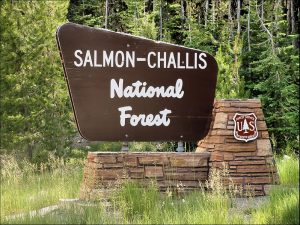As September comes to a close, and in the absence of Forest Service “weekly” litigation summaries since September 3 (with the most recent entry being August 7), here’s some other things that happened in court related to public land management during the month of August.
FOREST SERVICE
(Court decision in Grill v. United States (Court of Federal Claims).) The claim of an individual private plaintiff against the Forest Service for a Fifth Amendment “taking” of his property rights was dismissed by the claims court because there was no final decision on a special use permit regarding the construction of a bridge to access to his property through the Tahoe National Forest.
(Litigation settlement in Center for Biological Diversity v. U. S. Forest Service (D. Ariz.).) On August 18, the Forest Service agreed to additional monitoring and enforcement of grazing restrictions and future planning on 42 grazing allotments on the Apache-Sitgreaves and Gila national forests to protect at-risk riparian species. (The linked article includes a link to the settlement agreement.)
(New case.) On August 18, three Oregon environmental groups sued the Willamette National Forest over its decision to use the “road repair and maintenance categorical exclusion” to remove “hazard trees” from burned areas along over 400 miles of road and encompassing thousands of acres. (Other hazard tree litigation was discussed here. Two other new cases against the Willamette and the Oregon BLM involving fire salvage are mentioned here)
BLM
(New case.) The Center for Biological Diversity filed a lawsuit under the Freedom of Information Act in federal court in Nevada in early August against the Bureau of Land Management seeking information about plans to create fuel breaks across six western states (described here). This follows a January Notice of Intent to Sue under the Endangered Species Act for failure to consult with the U. S. Fish and Wildlife Service.
(Notice of intent.) Five environmental groups have notified the BLM of their intent to sue under the Endangered Species Act regarding development of a categorical exclusion that allows the BLM to conduct salvage harvests of certain sizes without preparing an EA, and its use for a 910-acre salvage harvest in Oregon. (Guest appearance by one of our contributors.)
(Notice of intent.) On August 19, the Center for Biological Diversity filed a notice of intent to sue the U.S. Bureau of Land Management and U.S. Fish and Wildlife Service for failing to protect critical habitat for Amargosa voles from recreation and groundwater pumping in marshes in the Mojave Desert in California. (The news release includes a link to the notice.)
OTHER
(Court decision.) On August 30, the federal district court in Arizona vacated the April 2020 Navigable Waters Protection Rule in which the Trump Administration revised the definition of Waters of the United States (WOTUS), narrowing the geographic scope of the Clean Water Act (which we also discussed here).
(Court decision in Northwest Environmental Defense Center v. U. S. Army Corps of Engineers (D. Or.).) On September 1, the district court directed the Corps to take actions to protect migrating listed salmon and steelhead that had been required in 2008. The presence of these listed species affects management on national forests in the Willamette basin. This was one of those unusual environmental cases where the judge ordered a federal agency to actually do something substantive. The judge convened a panel of experts from the environmental groups, Army Corps and National Marine Fisheries Service to design the implementation plans, and ordered the Corps to begin drawing down the water level in Cougar Reservoir on the South Fork McKenzie River east of Eugene, and to begin conducting overnight spill operations at Foster Dam on the South Fork Santiam River near Sweet Home.
- Renewable energy
(New case.) Awhile back there was a post on environmentalist views of renewable energy. Here are a couple of articles related to lawsuits against federal approval of Vineyard Wind, the first industrial-scale offshore wind project in the U.S. One lawsuit is from residents of Nantucket Island, but, “Those Nantucket residents are not alone. Beach communities from North Carolina to Maine and the Great Lakes joined together to form the American Coalition for Ocean Protection.” This sounds like a NIMBY group with a huge back yard, but this article points out that the project is also being challenged by a competing developer of on-shore wind energy (pretending to be concerned about environmental impacts and NEPA). It also suggests opposition from “wildlife organizations” that would want to avoid harms like those identified by the ACOP. I don’t think renewables will get a free pass.



